Results
-
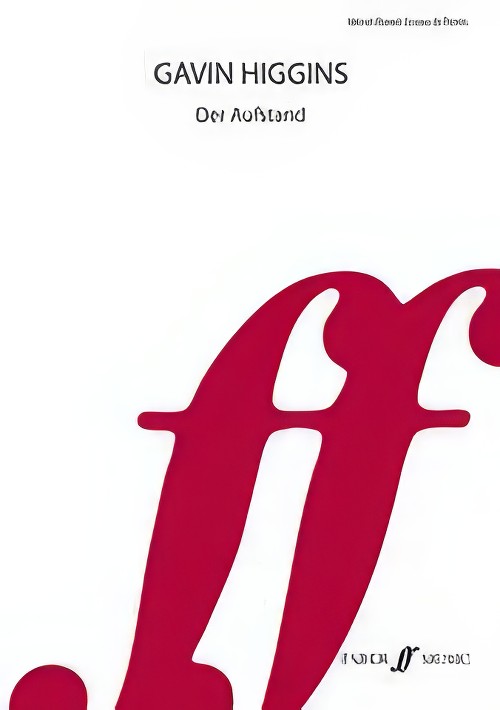 £69.99
£69.99Der Aufstand (Concert Band - Score and Parts) - Higgins, Gavin
Der Aufstand (German for 'riot') is not a descriptive work, nor is it solely based on the riots of 2011. It does, however, draw on the idea of opposing forces and escalating anger. The work falls into two contrasting sections that are linked by a series of repeated, 'screaming' chords. A slow build drives the first section from a single pitch to a blazing orchestral tutti. The second section is a fast and wild series of fanfares and driving rhythms that ultimately cannot be sustained. In many ways this mirrors the first. Both sections open on single tones (Bb and E) and grow to a climax of brass and hammered chords. The first performance took place on the last day of the 2012 Olympic Games. Der Aufstand is a noisy antithesis to the celebratory fanfare. Duration: 10.00
Estimated dispatch 7-14 working days
-
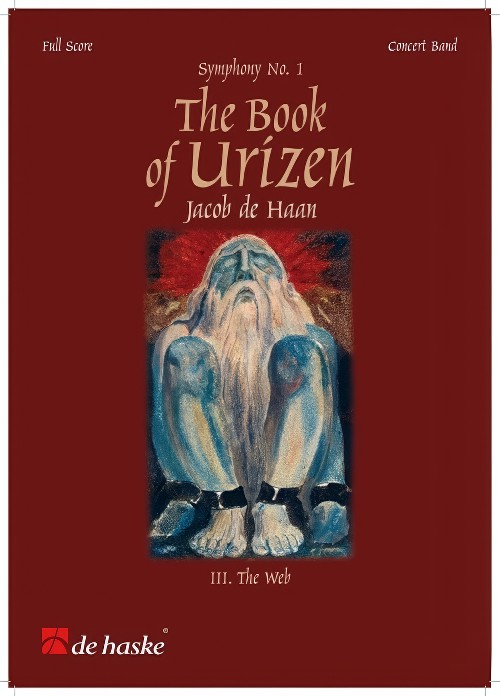 £244.99
£244.99The Book of Urizen (Movement III: The Web) (Soprano, Narrator and Concert Band - Score and Parts) - De Haan, Jacob
The Book of Urizen is a work for concert band, solo soprano, and a male narrator in which sound collages of religious expressions are used. The piece is inspired by the compelling visionary poem of the same name (which the poet illustrated himself) by the Englishman William Blake (1757-1827), who occupies a unique position in western literature and the visual arts. He was not just a poet and a writer, but he was also a graphic artist, a painter, an illustrator, a spiritualist, a religious visionary, and a mystic philosopher. For the performance of this work, a professional sound system, including two microphones and a CD player, is needed. The three sound collages are three separate tracks on the enclosed CD and can be played easily at the right moment.The Book of Urizen bears resemblance to Genesis and Exodus, of which the contents form the basis of the Christian, Jewish, and Islamic faith. Blake adhered to the principle that all religions are in fact one, and that deities reside in human beings. In The Book of Urizen this is represented in "The Net of Religion," which is spanned over the earth by Urizen. The sound collages, compiled by Jacob de Haan in the studio, find their origin in Jerusalem, the Holy City, where the afore-mentioned faiths come together.The first two movements, The Vision and The Creation, are available in a separate set.
Estimated dispatch 7-14 working days
-
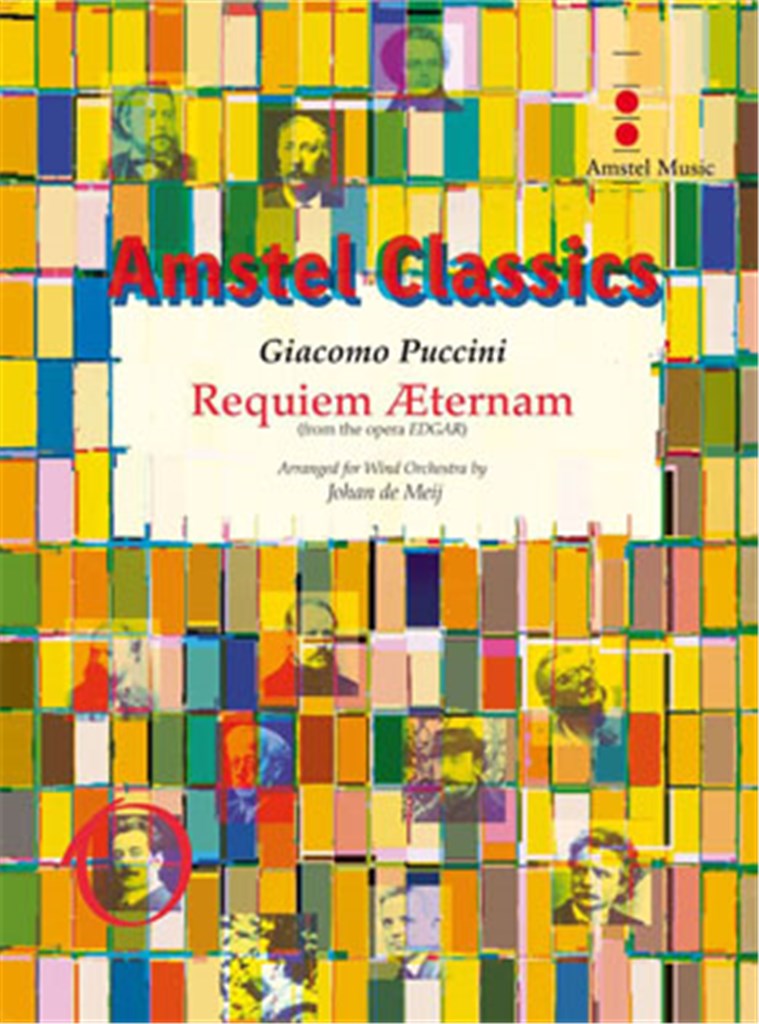 £68.00
£68.00Requiem Aeternam (from Edgar) (Concert Band - Score and Parts) - Puccini, Giacomo - De Meij, Johan
Giacomo Puccini was commissioned to write a second opera after the resounding success of his first, Le Villi. However, the original four-act, grand opera Edgar, to a libretto by Ferdinando Fontana, received a rather lukewarm reception at its premiere in La Scala in Milan in 1889. Initially, the work was only performed three times. Of all the planned performances in the subsequent two years, only one took place, in Lucca, Puccini's birthplace. There, the work was well received. Nevertheless, the composer decided to make drastic changes to Edgar the most radical being the reduction of the opera to three acts, as well as altering a few arias, characters and instrumental parts. In its revised form, the work was even less popular than before. The discarded fourth act later provided material for Tosca (the duet Amoro sol' per te), but Puccini never felt the need to defend Edgar as he did other less fortunate operas, such as La Rondine and Suor Angelica. On a piano excerpt for his female friend Sybil Seligman he even corrupted the title to 'E Dio ti Guarda da quest' opera' (may God preserve you from this opera). This did not prevent Arturo Toscanini performing the Requiem from the third act at Puccini's funeral in Milan Cathedral on 3 December 1924. The Requiem in the third act is being played when the long funeral procession carries the alleged body of Edgar, the confused young man hesitating between the love of the virtuous Fidelia and the exotic Tigrana. The mass hails Edgar as a hero, but a monk claims that he has betrayed his country for a few gold pieces. When the soldiers try to desecrate the body, they discover that the armor contains none. The monk reveals himself as Edgar. He wants to leave with his faithful Fidelia, but the vengeful Tigrana stabs him and kills Fidelia. Edgar grieves over the lifeless body of his beloved, while Tigrana is arrested and the people submerge into prayer. Duration: 3.30
Estimated dispatch 7-14 working days
-
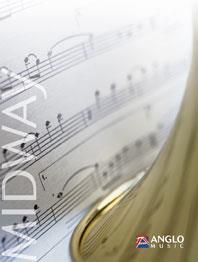 £206.99
£206.99Songs of the East Coast Fishermen (Concert Band - Score and Parts) - Sparke, Philip
100 years ago English composer Vaughan Williams visited Norfolk (an area on the east coast of England) to collect and notate folk songs from people of all trades and callings. Accompanied by a local clergyman, he visited The Tilden Smith, a pub which was a favourite haunt of the 'Northenders', the local fishermen, and in less than a week the composer had notated 61 songs. Vaughan Williams incorporated the best of these songs into his own music, most notably in A Norfolk Rhapsody and the Sea Symphony. Philip Sparke has composed this suite based on five of these folk songs together with King's Lynn, a folk song which Vaughan Williams adapted into a popular hymn tune. Why not bring a piece of traditional English heritage to any concert with this melodious work.Duration: 14:00
Estimated dispatch 7-14 working days
-
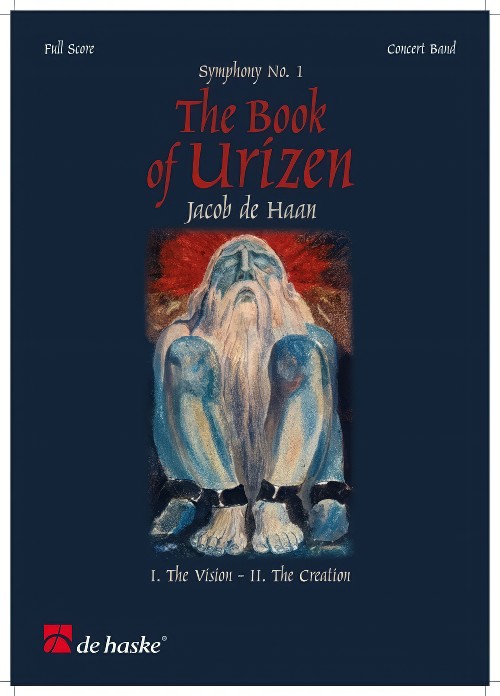 £421.99
£421.99The Book of Urizen (Movements I: The Vision and II: The Creation) (Soprano, Narrator and Concert Band - Score and Parts) - De Haan, Jacob
The Book of Urizen is a work for concert band, solo soprano, and a male narrator in which sound collages of religious expressions are used. The piece is inspired by the compelling visionary poem of the same name (which the poet illustrated himself) by the Englishman William Blake (1757-1827), who occupies a unique position in western literature and the visual arts. He was not just a poet and a writer, but he was also a graphic artist, a painter, an illustrator, a spiritualist, a religious visionary, and a mystic philosopher. For the performance of this work, a professional sound system, including two microphones and a CD player, is needed. The three sound collages are three separate tracks on the enclosed CD and can be played easily at the right moment.The Book of Urizen bears resemblance to Genesis and Exodus, of which the contents form the basis of the Christian, Jewish, and Islamic faith. Blake adhered to the principle that all religions are in fact one, and that deities reside in human beings. In The Book of Urizen this is represented in "The Net of Religion," which is spanned over the earth by Urizen. The sound collages, compiled by Jacob de Haan in the studio, find their origin in Jerusalem, the Holy City, where the afore-mentioned faiths come together.In the first movement of this composition, The Vision, Urizen prepares his vision of the world, and he presents this to the "Eternals." His vision is rejected, and Urizen locks himself up in his own abstract world. When he does emerge again, he is confronted with rage by the gathered Eternals. Urizen flees the wrath of the Eternals, "the flames of eternal fury," and enwombs himself in his own world. When the Eternals see Urizen in his "stony sleep," they wonder if this is death. The blacksmith Los is torn by grief because of the isolation of Urizen. It brings him to rouse his fires, prepare his forge, and to give Urizen's world concrete form.In the second movement, The Creation, Urizen's world, but also man, woman, and child are created. Los is horrified with the appearance of Urizen's body. He mourns and pities Urizen, and from his blood a female form comes into being, with the name Enitharmon. The Eternals, fearful of the female form, decide to erect a tent to obstruct their view to eternity. Enitharmon and Los beget a son, called Orc. Los baptizes him as a child of the "fallen world." Orc is fed at Enitharmon's breast, which makes a girdle of jealousy restrict Los' chest. He takes the child to the top of the mountain and chains him down. The cries of Orc awaken Urizen, who explores his world creating instruments of scientific measurement to do so. Los encircles the face of Enitharmon from the sight of Urizen and Orc. She then populates the earth by giving birth to an enormous race.The Web, the third movement of The Book of Urizen, is available in a separate set.
Estimated dispatch 7-14 working days
-
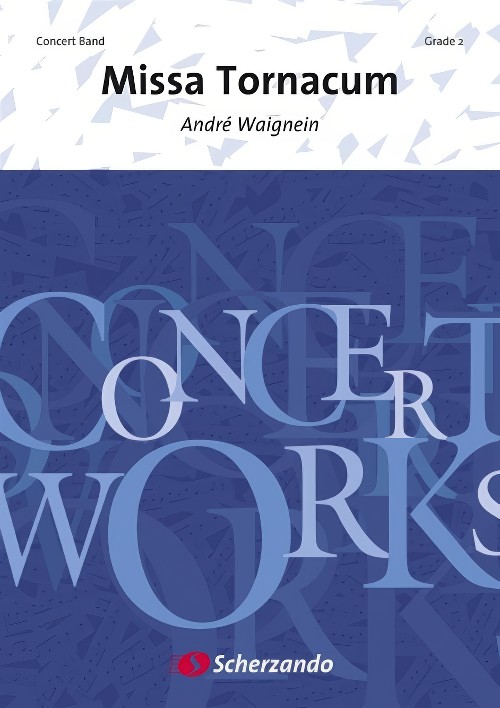 £202.99
£202.99Missa Tornacum (Choir with Concert Band - Score and Parts) - Waignein, Andre
Felicien Doyen, the President of the Tornacum Royal Choir Circle of Tournai (Belgium) and a close friend of the composer commissioned this Mass. Missa Tornacum was originally composed for mixed choir and organ, gave a memorable performance of the piece in the Chartres Cathedral in France.Although it does not include the Credo, the work is composed according to the traditional structure of a Mass in five parts : Kyrie, Gloria, Sanctus, Agnus Dei, and Ite missa est. En the first two parts, a dialogue is created between the choir and the band. It is followed by the Sanctus cycle ("Sanctus" - "Hosanna" - "Benedictus"), which is remarkable for the contrasts between the tone colours characterising each of its three parts. The fourth part, Agnus Dei, takes on a tone of serene intimacy. A free counterpoint draws this section to a close by fading into an almost imperceptible quietness. Ite missa est begins with a series of imitations, which develop into a majestic and cheerful passage marking the end of the Mass. Choir parts are available separately.Duration: 17:00
Estimated dispatch 7-14 working days
-
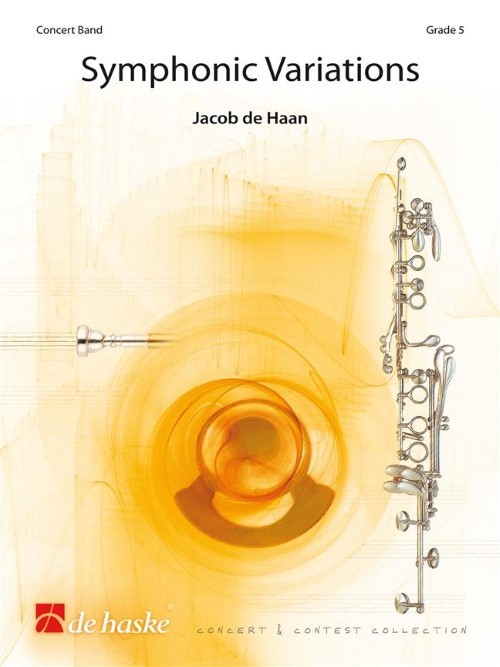 £154.99
£154.99Symphonic Variations (Concert Band - Score and Parts) - De Haan, Jacob
This composition is based on a passacaglia theme, in which artistic perfection, symphonic drama and oriental melody lines play a role. The passacaglia is originally a dance made up of a series of variations above a bass line constantly present as an ostinato. It is not in this sense that the "Symphonic Variations" are in the passacaglia form but in the sense of the open form of the variations. Jacob de Haan, himself originally an organist, took his inspiration for this piece from the famous passacaglia for organ in C-minor by J.S. Bach. Following the introduction of the passacaglia theme (in the bass) the entry by the trumpets and trombones forms the majestic start to a musical adventure, in which this theme (often fragmentary) returns in variations. Then there follow two faster movements with dramatic contrasts and virtuose passages. Particularly striking here is the use of two characteristic intervals from the beginning of the theme namely the minor second and the augmented fourth. An apause in the composition comes in the slow bridge where a syncopated bourdon (perfect fifth) is constantly repeated. The tension grows in dynamics and harmony, and the oriental-flavour becomes obvious in the melody. We arrive at a faster movement via an accelerando, in which a perpetuum mobile based on the passacaglia theme is central. Finally the whole flows into a martial theme, in which the ostinato accompaniment n the descant derives from the passacaglia theme.Duration: 11:15
Estimated dispatch 7-14 working days
-
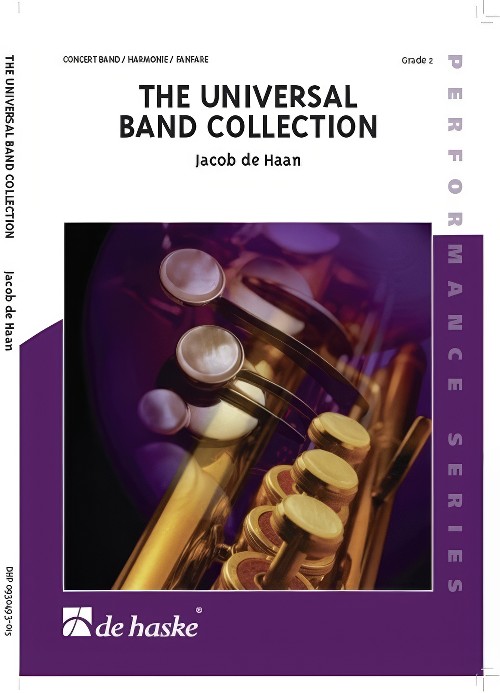 £118.99
£118.99The Universal Band Collection (Concert Band - Score and Parts) - De Haan, Jacob
A collection of 5 short works in pop style which can be performed by any kind of compilation. The titles can be presented on the programme as separate works but the Universal Band Collection can also be performed as a complete suite. From a didactic point of view it is a suitable work to teach musicians something about the structure in music. For this purpose not only the big structure but also the small structure was kept very clear.Western Girl: A girl from the west of the USA rides her horse across the prairie, dreaming of her future. The rough structure: introduction - theme in a blues scale - the same thing in a different instrumentation - finale.Just a ballad: A ballad in pop style with a rough A-B-A form. First there is the introduction of the main theme (A), then follows a tenor melody in minor with a rhythmical reference to the main theme (B). Finally there is the main melody, performed tutti with a different rhythm in the drums (A').Play the Game: An English saying meaning: play fairly. Playful music in up-tempo with a wink to China, where almost all games are manufactured nowadays. Once again an A-B-A structure here.San Diego: A Mexican fugitive enjoys his freedom in America but also remembers his place of birth with melancholy. A sad minor melody with a straight trendy beat appears twice. The second time it has a slightly different instrumentation, in which the muted trumpets represent the Mexican feeling.Final Dance: Eventually there is a dance with an introduction in renaissance style, followed by a fast dance in rock style. All this composed in a classical song structure: introduction, verse, bridge, chorus, shortened verse, bridge, chorus, chorus.Duration: 10:30
Estimated dispatch 7-14 working days
-
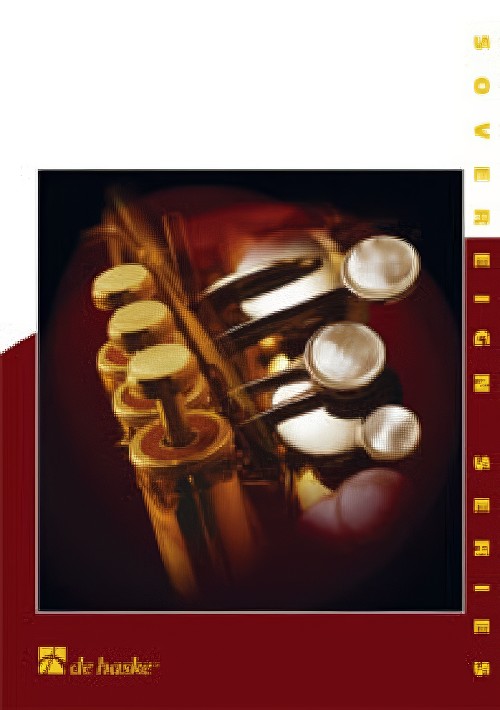 £179.99
£179.99Amazonia (Concert Band - Score and Pars) - Van der Roost, Jan
This major concert work consists of five movements:1st movement: La Laguna del Shimbe. Situated high up in the Andes mountains in Northern Peru are the Huaringas, a group of lagoons in isolated and mysterious surroundings. The water has healing powers and for centuries traditional healers have settled there in small villages. From far the sick come to the Huaringas to be treated in nightly rituals, in which the hallucinating juice of the San Pedro cactus gives the prophet a look inside his patient. The biggest lagoon is the "Laguna del Shimbe", one of the countless wells of the immense Amazon stream.2nd movement: Los Aguarunas. Further downstream in Northern Peru we come across the rain tribe of Los Aguarunas. It's a proud, beautiful and independent race, which has never succumbed to domination, not even from the Incas. They live from everything the forest has to offer: fish, fruit, plants... They also grow some crops and live as semi-nomads. They take their fate into their own hands and after having made contact with modern civilisation, they have integrated new elements into their lives without betraying their own ways.3rd movement: Mekaron. Mekaron is an Indian word meaning "picture", "soul", "essence". The Indians are the original inhabitants of the Amazon region. They either live in one place as a group or move around a large region. They all have their own political system, their own language and an intense social life. At the same time they are master of music and medicine. "Everywhere the white man goes, he leaves a wilderness behind him", wrote the North American Indian leader Seatl in 1885. As a result of these contacts with the whites, the disruption of most Indian societies began. (In this century alone, 80 tribes have vanished completely).4th movement: Ktuaj. This is the name of the initiating ceremony of the Krah tribe in the Brazilian state of Goias, in which young boys and girls enter adult life. They are cleansed with water, painted with red paint and covered with feathers, after which the ritual dance holds the entire tribe spell-bound.5th movement: Paulino Faiakan. In 1988 the Indian chiefs Faiakan and Raoni Kaiapo came to Europe to protest against the building of the Altamira dam in Brazil. As a result of the dam the Indians would be driven from their traditional land and enormous artificial would be created. The project was supported financially by, amongst others, the European Community. In February 1989 the Indian tribes around Altamira held a protest march for the first time in their history together. Amongst other things they paid tribute tot Chico Mendez, who, murdered in 1988, was the leader of the rubber syndicate and a fierce opponent of the destruction of the Brazilian rain forest. Brazilian and world opinion was awakened. The building of the dam was, albeit temporarily, stopped.Duration: 12:30
Estimated dispatch 7-14 working days
-
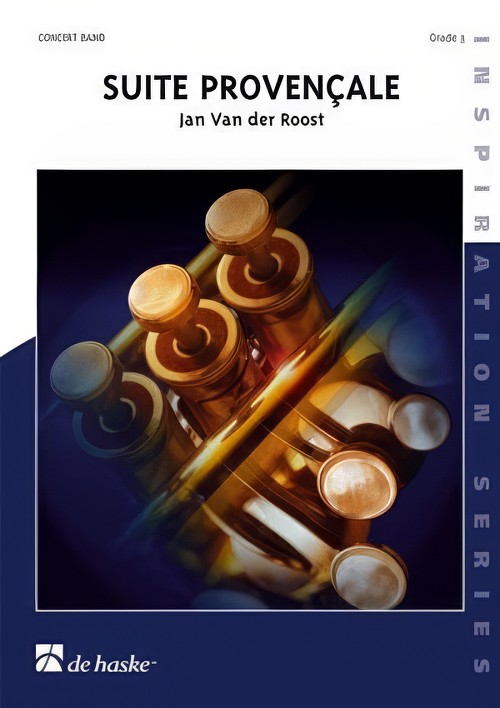 £149.99
£149.99Suite Provencale (Concert Band - Score and Parts) - Van der Roost, Jan
This 4-movement suite is based on authentic folk tunes from the beautiful southern province in France: the "Provence". The composer used an harmonic language respecting the popular characteristics, but on the other hand also contains some "spicy" notes (...just like the well known "Provencal sauce"!...). The instrumentation is very colourful, paying a lot of attention to the different timbres of both brass and wood winds as well as to the percussion section. Every movement has its own character: "Un Ange a fa la crido" (= An angel brought the creed/credo) is like a bourree, "Adam e sa Coumpagnou" (= Adam and his companion) is an old love song, "Lou Fustie" (= the carpenter) a fast dance and finally "Lis Escoubo" (= a whistle tune / popular ballad) is a farandole. In the latter, the old tradition of folk musicians who play a whistle with one hand and a drum with the other hand, is clearly represented during the first presentations of the one and only theme)Although this piece is not too demanding, a well balanced band is necessary to perform it successfully. Thanks to the contrasts and the varying colours, it keeps on holding the attention.Duration: 7:15
Estimated dispatch 7-14 working days
